Accordion House
The San Francisco building which once had a keyboard parapet.

I’ve been getting sandwiches at Cow Hollow’s Corsagna Deli since I was in high school. The small ground-floor space at 1668 Union Street has a few tables on the sidewalk, but I usually walk a block and enjoy my lunch on one of the low benches of Allyne Park.
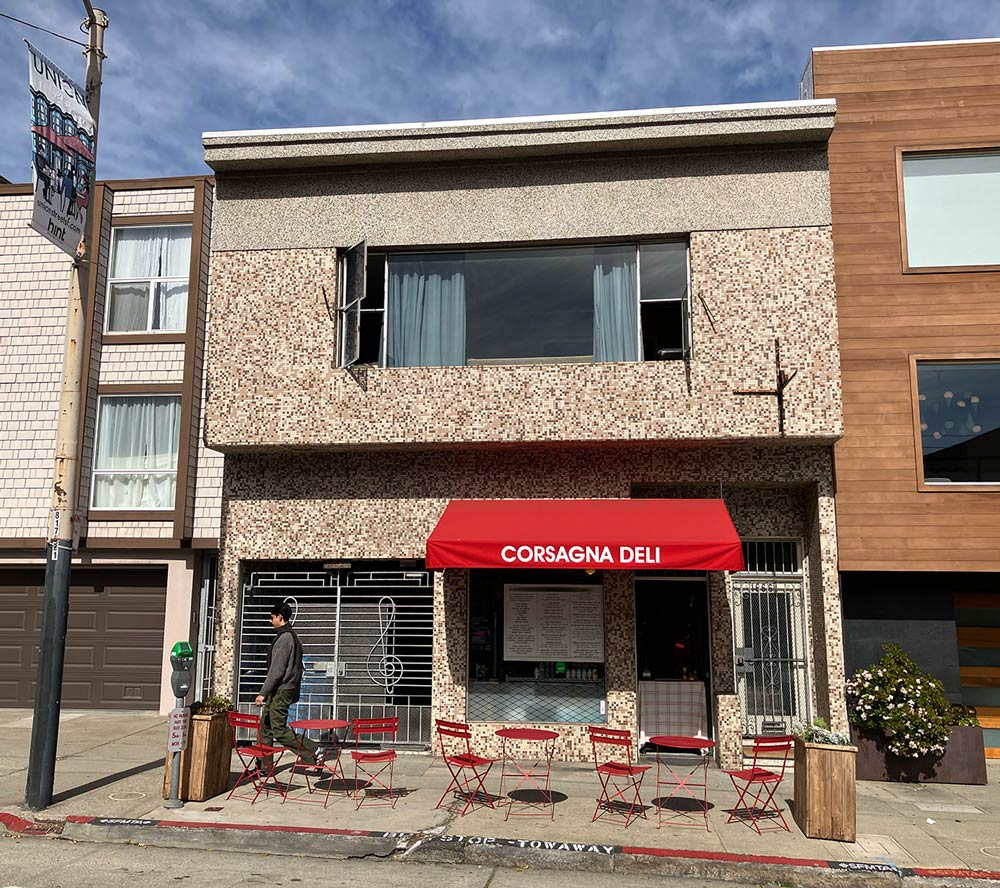
One of the family members who works there told me Corsagna began as an Italian bakery in the 1970s, but frequent customer requests for sandwiches convinced her grandmother to start the deli in 1980. None of that explains why the building looked like this in the 1950s:

Contractor Leo Dal Bon completed 1666-1668-1670 Union Street in December 1950. The building permit describes just another wood-frame building with flats over a garage and commercial space, one of many hundreds of similar multi-unit structures built in San Francisco from the 1920s to the 1960s. The owner who hired Dal Bon, however was not a common San Franciscan.
Those Darned Pezzolos
J. Theodore Pezzolo came from a family you might say was musical. The Pezzolos were like the singing von Trapp family from The Sound of Music, except the accordion was their thing. If a movie on the Pezzolos was made it might be called The Sound of Too Much Music, as no less than 6 Pezzolo brothers (some sources say nine!) played the instrument.

Pezzolos wrote music for accordions. Pezzolos ran a resort in Lake County in which summering San Franciscans danced to the music of accordions. Pezzolos in North Beach and then the Excelsior District repaired and sold accordions. Pezzolos, including Theodore on Union Street, taught many city kids how to play accordions.
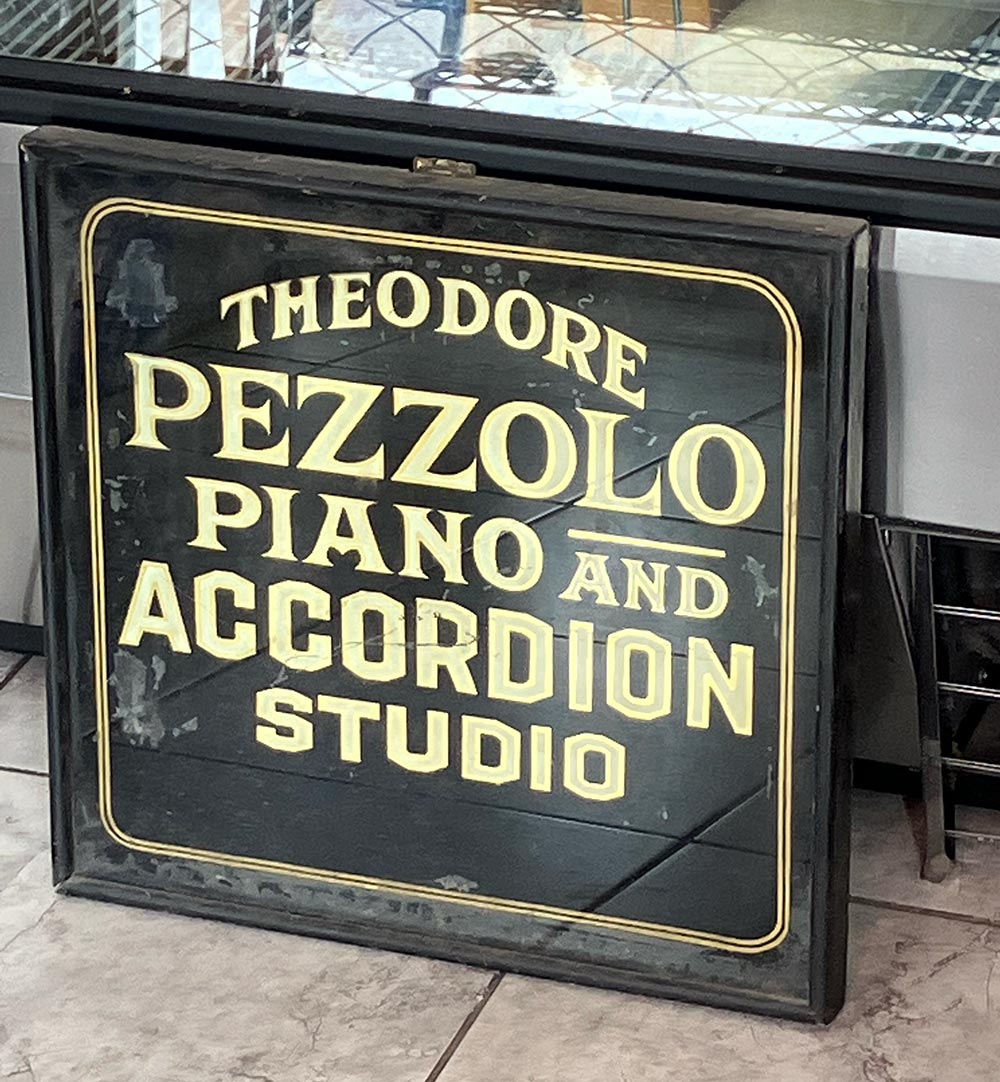
The accordion is the official San Francisco city instrument and used to be a big deal. A reported 10,000 people attended the San Francisco Accordion Club picnic in 1935, in which the Pezzolo Schools were prominently featured. The October issue of Accordion News that year reported that the festivities opened with 80 Pezzolo disciples playing as one big accordion band before each giving an individual performance. It was a long afternoon:
“While these amateurs are unwinding their numbers those of the audience near them pass loud remarks about their abilities or their personal life. At times a chorus of stamping feet beating tempo forms a jolly rhythm with the melancholy tone of the accordion. One by one the players file past in an interminable procession of accordion button-pushers under a sun fiery enough to cook an egg in its shell. Brows are wet with sweat, cheeks reflect Sol’s redness, parched throats call for more wine but the parade of Pezzolo’s pupils does not end.”
Sometime soon after Theodore Pezzolo’s building on Union Street was finished, an as-yet-unidentified manufacturer fabricated the amazing 20-x-25-foot School of Music sign on the upper floor. The city Assessor-Recorder documented the work in 1951:

Not a Duck
On first glance this would seem to be a rare San Francisco instance of what’s called “duck” architecture, in which a building is made in the form of the product or service to which it relates. The style name is inspired by the big duck built for a duck farm on Long Island, New York.
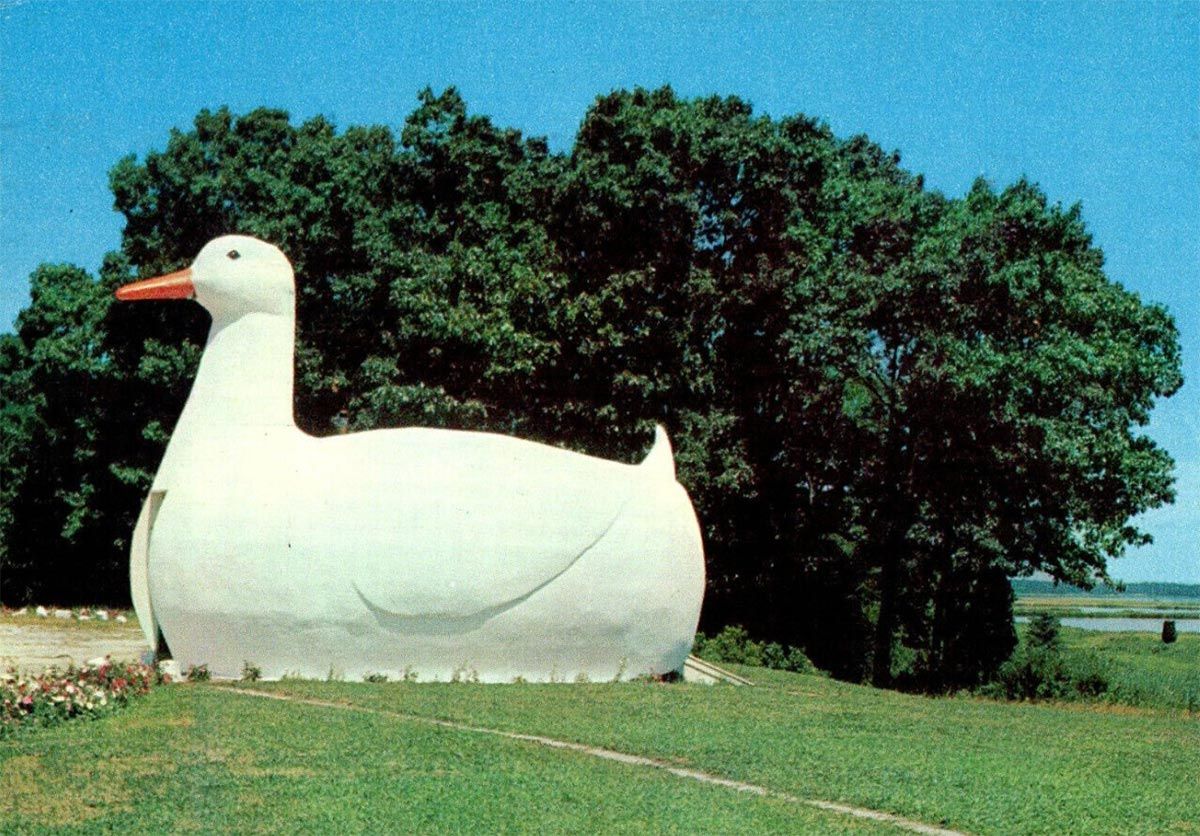
Other examples are the big orange stands that used to line California and Florida roadsides, mammoth hot dog or coffee pot restaurants, or—the nuttiest in my opinion—the office building made as the headquarters for an Ohio picnic basket manufacturer in 1990s:


But the Accordion House is more strictly defined as a “decorated shed” according to the authors of Learning from Las Vegas, the seminal 1972 work on appreciating what you and I might call “crazy-ass American architecture.”
Rather than taking a symbolic form, decorated shed buildings are usually straightforward in design and construction, but have wacky stuff affixed to the exterior. Learning from Las Vegas described them as having “a rhetorical front and conventional behind.” (Kind of like a reverse structural version of a mullet hairstyle, which is known as “business in the front and party in back.”)
Another decorated shed from San Francisco’s past would be Bernstein’s Fish Grotto on Powell Street, with its ship-prow entrance.

Accordion House only survived ten years. Theodore Pezzolo took down his sign in 1961. The façade was stripped and replacement ceramic tile, which is seen on the building today, was signed off on by the Department of Building Inspection on September 20, 1961. Pezzolo sold the building to Egidio Giampaoli shortly afterward and it’s been in the hands of that family, who run Corsagna Deli, ever since.
Some small reminders of Accordion House remain. The iron garage gate is decorated with musical notation. Inside the deli are images of Theodore School of Music and an old window glass advertisement from a different Pezzolo school location. Go get a sandwich and check them out.
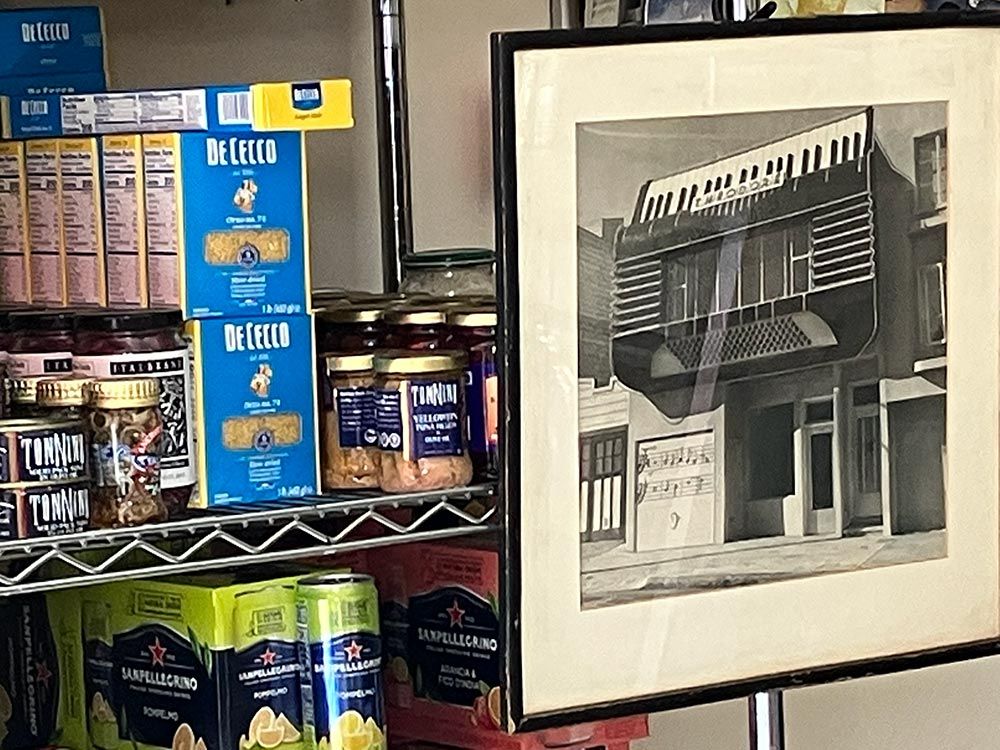

As attested by my personal history of fighting for giant dog heads, I’m a sucker for the “architecture of commercial persuasion,” what others might consider tacky. But as the authors of Learning from Las Vegas pointedly asked: “If it is all bad, why is it so inspiring?”
Can you remember other decorated sheds or examples of duck architecture in San Francisco? Perhaps the Giant Camera at the Cliff House? Others? Let me know!
Woody Beer and Coffee Fund
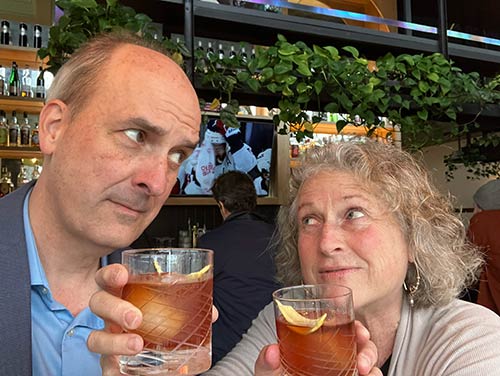
Great thanks to Andre B. and Ed F. (Friends of Woody!) for their contributions to the Woody beverage endowment. Because of their generosity, thirst shall be slackened and San Francisco small businesses hosting moderate and genteel imbibery shall prosper. Consider both contributing to this great cause and making a date to let me buy you a round.
Sources
Robert Venturi, Denise Scott Brown, Steven Izenour, “Learning from Las Vegas: The Forgotten Symbolism of Architectural Form” (Revised Edition, Cambridge, MA: The MIT Press, 1977).
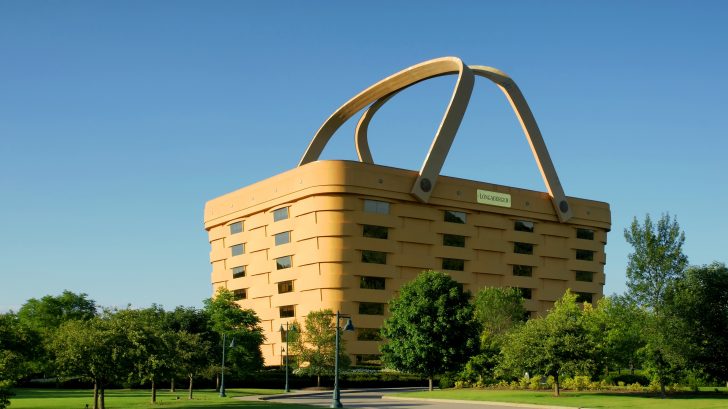
Kurt Kohlstedt, “Lessons from Sin City: The Architecture of Ducks Versus Decorated Sheds” (99% Invisible)
The 1935 article from Accordion News was excerpted in the Bay Area Accordion Club newsletter of August 2003.


